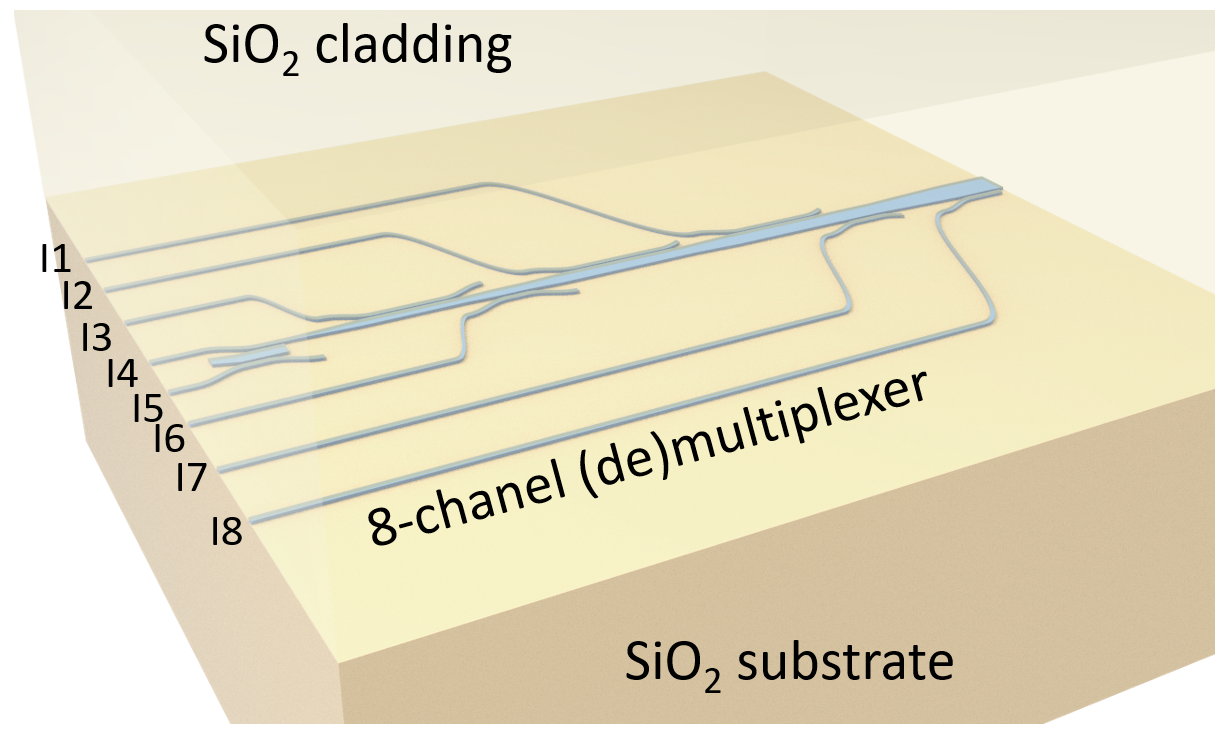# 8-channel mode and polarization (de)multiplexer
Mode-division multiplexing and polarization-division multiplexing on integrated photonic circuits are critical for large-bandwidth and high-speed optical communication networks. This example introduces an 8-channel mode and polarization (de)multiplexer that is based on asymmetric directional couplers that operate on TE0 to TE3 as well as TM0 to TM3 modes. The design is based on Wang, J., He, S. and Dai, D. (2014), On-chip silicon 8-channel hybrid (de)multiplexer enabling simultaneous mode- and polarization-division-multiplexing. Laser & Photonics Reviews, 8: L18-L22 (opens new window).
In the first part, we use Tidy3D’s ModeSolver (opens new window) to simulate the effective indices of the eight modes as a function of waveguide width. From the result, we can obtain the width of the bus waveguide in each directional coupler section to satisfy the phase match condition.
In the second part, we model each directional coupler section individually to ensure good mode conversion efficiency.
Lastly, once we confirm that good performance is achieved on each section, we build the whole 8-channel (de)multiplexer and simulate the whole device, which is about 200
The models in this example contain many waveguide bends. It is often easier to make use of gdstk as shown in the GDSII import tutorial (opens new window). Here we will also demonstrate how to use gdstk to define the structures used in the simulation.
To view the full example in Python, please click here (opens new window).

